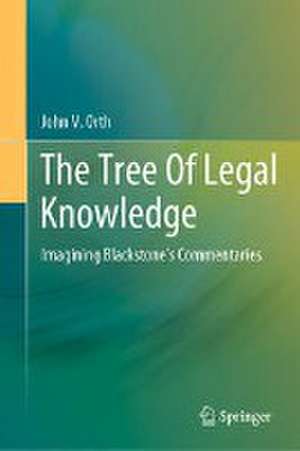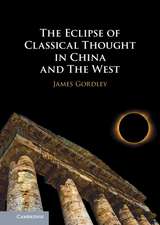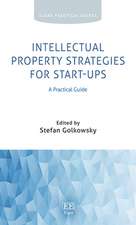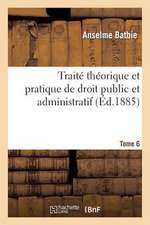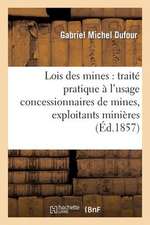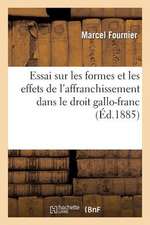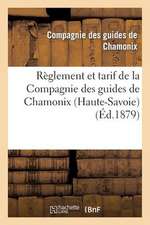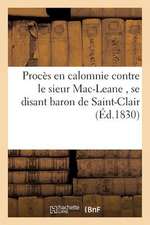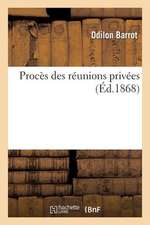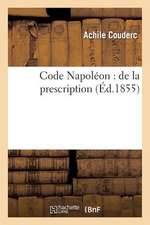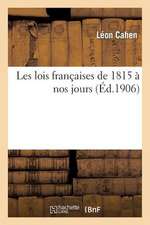The Tree of Legal Knowledge: Imagining Blackstone’s Commentaries
Autor John V. Orthen Limba Engleză Hardback – 2 mar 2023
Although Blackstone’s Commentaries had been first published eighty years earlier, it remained the primary source for knowledge of English law and required reading for American law students. The Commentaries remain relevant today and are frequently cited by the U.S. Supreme Court as a source for the original understanding of legal rights and obligations at the time of American Independence. Despite its artistic beauty and academic significance, The Tree of Legal Knowledge had seemingly disappeared shortly after its publication. It is not included in the collection of any library, including the Library of Congress or in Yale University’s Blackstone Collection, the largest in the world. It is not listed in the comprehensive Bibliographical Catalog of William Blackstone, edited by Ann Jordan Laeuchli, published for the Yale Law Library in 2015.
The present volume reproduces the only extant copy of The Tree of Legal Knowledge. It includes an introduction by the editor that places The Tree in historical context and identifies the anonymous author, an otherwise unknown lawyer. In addition, it reprints the original author’s introduction and “explanation of the branches,” both extensively annotated. This book restores this lost masterpiece to its proper place in legal history. The Tree is a beautiful—and accurate—depiction of English law as expounded in Blackstone’s Commentaries, the single most important book in the history of the common law.
| Toate formatele și edițiile | Preț | Express |
|---|---|---|
| Paperback (1) | 768.98 lei 39-44 zile | |
| Springer Nature Singapore – 3 mar 2024 | 768.98 lei 39-44 zile | |
| Hardback (1) | 926.24 lei 6-8 săpt. | |
| Springer Nature Singapore – 2 mar 2023 | 926.24 lei 6-8 săpt. |
Preț: 926.24 lei
Preț vechi: 1129.56 lei
-18% Nou
Puncte Express: 1389
Preț estimativ în valută:
177.32€ • 182.36$ • 147.10£
177.32€ • 182.36$ • 147.10£
Carte tipărită la comandă
Livrare economică 20 februarie-06 martie
Preluare comenzi: 021 569.72.76
Specificații
ISBN-13: 9789811986956
ISBN-10: 9811986959
Pagini: 99
Ilustrații: XVII, 99 p. 22 illus., 13 illus. in color.
Dimensiuni: 155 x 235 mm
Greutate: 0.35 kg
Ediția:2023
Editura: Springer Nature Singapore
Colecția Springer
Locul publicării:Singapore, Singapore
ISBN-10: 9811986959
Pagini: 99
Ilustrații: XVII, 99 p. 22 illus., 13 illus. in color.
Dimensiuni: 155 x 235 mm
Greutate: 0.35 kg
Ediția:2023
Editura: Springer Nature Singapore
Colecția Springer
Locul publicării:Singapore, Singapore
Cuprins
Chapter 1. Editor's introduction.- Chapter 2. The tree of legal knowledge.- Chapter 3. Author's introduction.- Chapter 4. Author's explanation. Chapter 5. Author's explanation of the branches.- Backmatter.
Notă biografică
John V. Orth joined the Carolina Law faculty in 1978 and retired in 2021 as William Rand Kenan, Jr. Professor of Law Emeritus. He taught first-year Property, Trusts & Estates, and Legal History. Orth is Author of six books, three of them published by Oxford University Press, and ninety-eight articles and chapters. His writings cover a wide array of topics including labor law, constitutional law (both federal and state), legal history, wills and trusts, and basic property law. His works have been cited by federal and state courts, including the United States Supreme Court and the North Carolina Supreme Court. He has extensive contacts with Australian law professors and has published several articles comparing American and Australian law.
Orth has a law degree from the Harvard Law School and a Ph.D. in history from Harvard University. After completing his studies, he clerked for Judge John Gibbons of the U.S. Court of Appeals for the Third Circuit. While teaching, he maintained contact with the practice of law by consulting on questions concerning property, constitutional law, and wills and trusts.
Orth has a law degree from the Harvard Law School and a Ph.D. in history from Harvard University. After completing his studies, he clerked for Judge John Gibbons of the U.S. Court of Appeals for the Third Circuit. While teaching, he maintained contact with the practice of law by consulting on questions concerning property, constitutional law, and wills and trusts.
Textul de pe ultima copertă
This book restores to view a masterpiece of beauty and legal scholarship, which has been lost for almost two hundred years. Produced anonymously in 1838, The Tree of Legal Knowledge is an elaborate visualization in five large colored plates of the law as stated in Sir William Blackstone’s Commentaries on the Laws of England. Intended as “an assistant for students in the study of law,” the study aid was not a simple diagram but a beautiful tree with each branch and twig labeled with legal terms and concepts from the Commentaries. Not for law students only, the original was also intended to be of use to the practicing attorney and educated gentleman “in consolidating his learning and forming an instructive and ornamental appendage to an office.”
Although Blackstone’s Commentaries had been first published eighty years earlier, it remained the primary source for knowledge of English law and required reading for American law students. The Commentaries remain relevant today and are frequently cited by the U.S. Supreme Court as a source for the original understanding of legal rights and obligations at the time of American Independence. Despite its artistic beauty and academic significance, The Tree of Legal Knowledge had seemingly disappeared shortly after its publication. It is not included in the collection of any library, including the Library of Congress or in Yale University’s Blackstone Collection, the largest in the world. It is not listed in the comprehensive Bibliographical Catalog of William Blackstone, edited by Ann Jordan Laeuchli, published for the Yale Law Library in 2015.
The present volume reproduces the only extant copy of The Tree of Legal Knowledge. It includes an introduction by the editor that places The Tree in historical context and identifies the anonymous author, an otherwise unknown lawyer. In addition, it reprints the original author’s introduction and “explanation of the branches,” both extensively annotated. This book restores this lost masterpiece to its proper place in legal history. The Tree is a beautiful—and accurate—depiction of English law as expounded in Blackstone’s Commentaries, the single most important book in the history of the common law.
Although Blackstone’s Commentaries had been first published eighty years earlier, it remained the primary source for knowledge of English law and required reading for American law students. The Commentaries remain relevant today and are frequently cited by the U.S. Supreme Court as a source for the original understanding of legal rights and obligations at the time of American Independence. Despite its artistic beauty and academic significance, The Tree of Legal Knowledge had seemingly disappeared shortly after its publication. It is not included in the collection of any library, including the Library of Congress or in Yale University’s Blackstone Collection, the largest in the world. It is not listed in the comprehensive Bibliographical Catalog of William Blackstone, edited by Ann Jordan Laeuchli, published for the Yale Law Library in 2015.
The present volume reproduces the only extant copy of The Tree of Legal Knowledge. It includes an introduction by the editor that places The Tree in historical context and identifies the anonymous author, an otherwise unknown lawyer. In addition, it reprints the original author’s introduction and “explanation of the branches,” both extensively annotated. This book restores this lost masterpiece to its proper place in legal history. The Tree is a beautiful—and accurate—depiction of English law as expounded in Blackstone’s Commentaries, the single most important book in the history of the common law.
Caracteristici
Presents Sir William Blackstone’s Commentaries on the laws of England Unique source for the tree of legal knowledge (1838) Rare artistic presentation of Blackstone’s Commentaries
